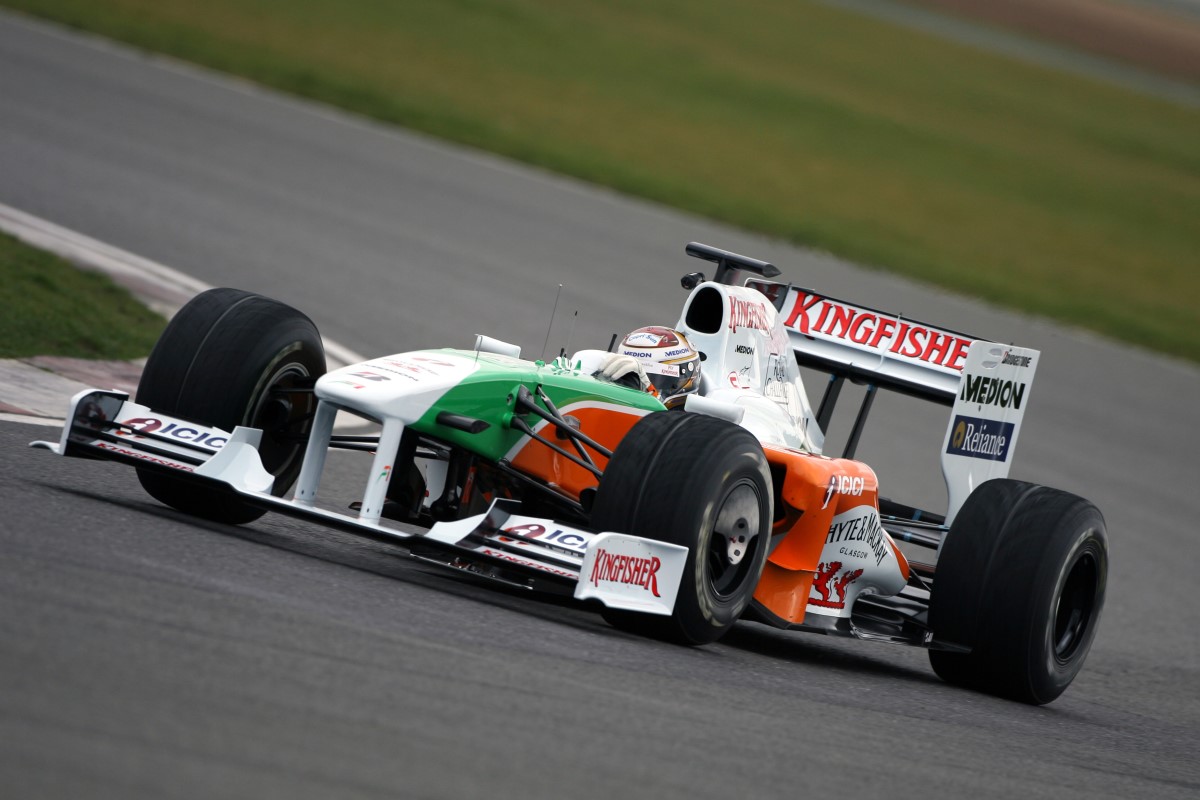KERS – a weighty issue
 |
| Force India has yet to commit to KERS due to weight |
Over the course of the off-season there’s been a lot of talk about the new rules package for 2009, and much of it has focused on Kinetic Energy Recovery Systems. Introduced to encourage teams to invest in technology which may have some benefit for production cars, KERS should also spice up the racing by giving drivers an 80bhp power boost which they can use for up to 6.7s each lap.
However, it comes at a cost. A typical KERS package weighs around 35kgs, and that weight has to be placed somewhere in the car. And it means that teams can no longer use lead ballast to bring their cars up to the weight limit, and optimize the car balance by putting that it in the ideal location.
So while KERS brings extra performance in terms of power, it also costs some in terms of overall handling and that’s why not all teams will be using KERS from the first race – and that includes Force India.
The other consideration is that there is so much new on the car this year that it was better to get the basics right before introducing the added complication of KERS to the mix. But as the season goes on the real issue will be simple – will KERS make the Force India VJM02 quicker?
‘The car is designed and built to run the exactly the same system as the McLaren,’ says Chief Operating Officer Simon Roberts. ‘We think as the season develops, KERS will become more of a differentiator. Currently we’re planning to introduce it, on a race-by-race basis, from Barcelona onwards. At the end of the day we’re going to treat it like any other performance item. If it makes sense for one or both of the drivers to user KERS, then we’ll use it. If it doesn’t, then we won’t.’
Just to make the question more complex, KERS may work for one driver and not the other. Adrian’s extra height means that he is heavier than Giancarlo, and when their respective cars are fitted with KERS, Adrian’s is over the weight limit even with a minimal fuel load. In the past the team could adjust the ballast to ensure he was not at a disadvantage, but now those few extra kilos cost lap time – and cancel out the gains from KERS.
‘If we had to call it now, based on what we’re know, then we’re setting ourselves up to running it on one car,’ says Roberts. ‘It’s not necessarily detrimental on Adrian’s car, but you don’t get the benefit, because it’s just offset with weight, obviously. With Giancarlo, at the right track, it’s definitely a performance positive as far as we can see. If there are intangibles like overtaking possibilities that you can’t calculate, then it swings in Adrian’s favor as well.’
Another consideration that will come into play is that KERS won’t have an overall advantage at some tracks, typically the tight and twisty ones, and at the opposite extreme, one of the fastest.
‘Currently, just on straight mathematics, you probably wouldn’t run it at places like Hungary and Monaco. But there may be some benefits that you can’t calculate that actually means there is an advantage to running it in those places. That’s the bit we don’t know yet. Silverstone for example is not a very big braking circuit, so you can’t harvest energy very efficiently."
“If you can get the energy in, you would use it there because it’s a fast, flowing circuit. But if you just can’t recover the brake energy, then you haven’t got any to use anyway. You’ll always be able to recover something, but not enough to use it effectively. If you only get 50% of the benefit, then I expect using will be marginal, because it just compromises the weight set-up of the car.’ Force India
